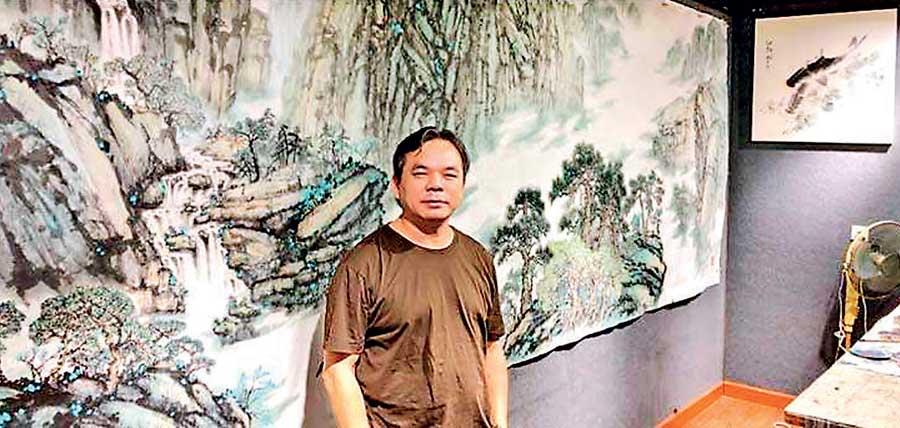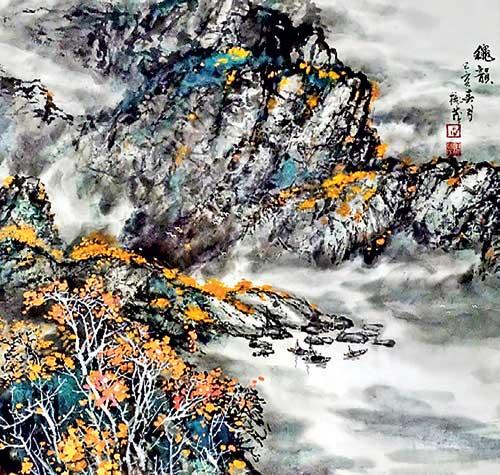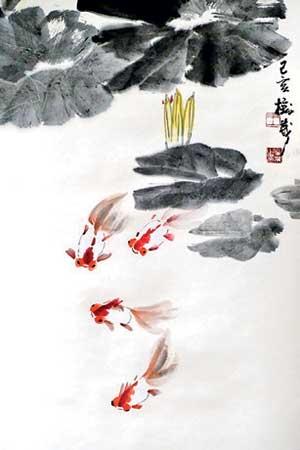Reply To:
Name - Reply Comment

The exhibition of watercolour paintings, ceramics and calligraphy by Chinese artist Wang Rongmao held at the J. D. A. Perera Gallery, the University of Fine Arts, Colombo, gave a rare opportunity to meet an artist working in a tradition that predates Western Classical Painting with a style in complete contrast to it. 
No attempt at perspectives here; and yet, the clouds seem to be floating well above the moss-covered rocks and flowing streams. This is the Chinese watercolour tradition, dating from the Five Dynasties period to the Northern Song period (907-1127 AD) known as the ‘Great Age of Chinese Landscape.’
Walking into the gallery, one has the impression of stepping back in time. Rongmao’s landscapes, bird studies and still lifes are as delicate and precise any of the classical paintings.
"Walking into the gallery, one has the impression of stepping back in time. Rongmao’s landscapes, bird studies and still lifes are as delicate and precise any of the classical paintings "
While many contemporary Chinese artists prefer to work with modern, Western formats, this man of humble origins from China’s Guang Dong Province prefers to work in the tradition of China’s old masters.
His skills have earned him the coveted title ‘Master.’ He says he began drawing and painting while still at primary school. After graduating from Shang Dong university, Rongmao started his life as a professional artist, 29 years to date, later learning the difficult techniques of applying glazes to ceramic ware.
He says his life as a mature artist began 12 years ago. Today, he is as renowned for his ceramic sculptures and glazes as he is for paintings and calligraphy. The subject matter of his ceramic artwork is drawn from flora and fauna, displaying his skills in bringing to life flowers, fruits and animal shapes.
Master Rongmao has exhibited widely across Asia, but this was his first visit to Sri Lanka.
The time from the Five Dynasties period to the Northern Song period (907–1127) is known as the “Great age of Chinese landscape”.


